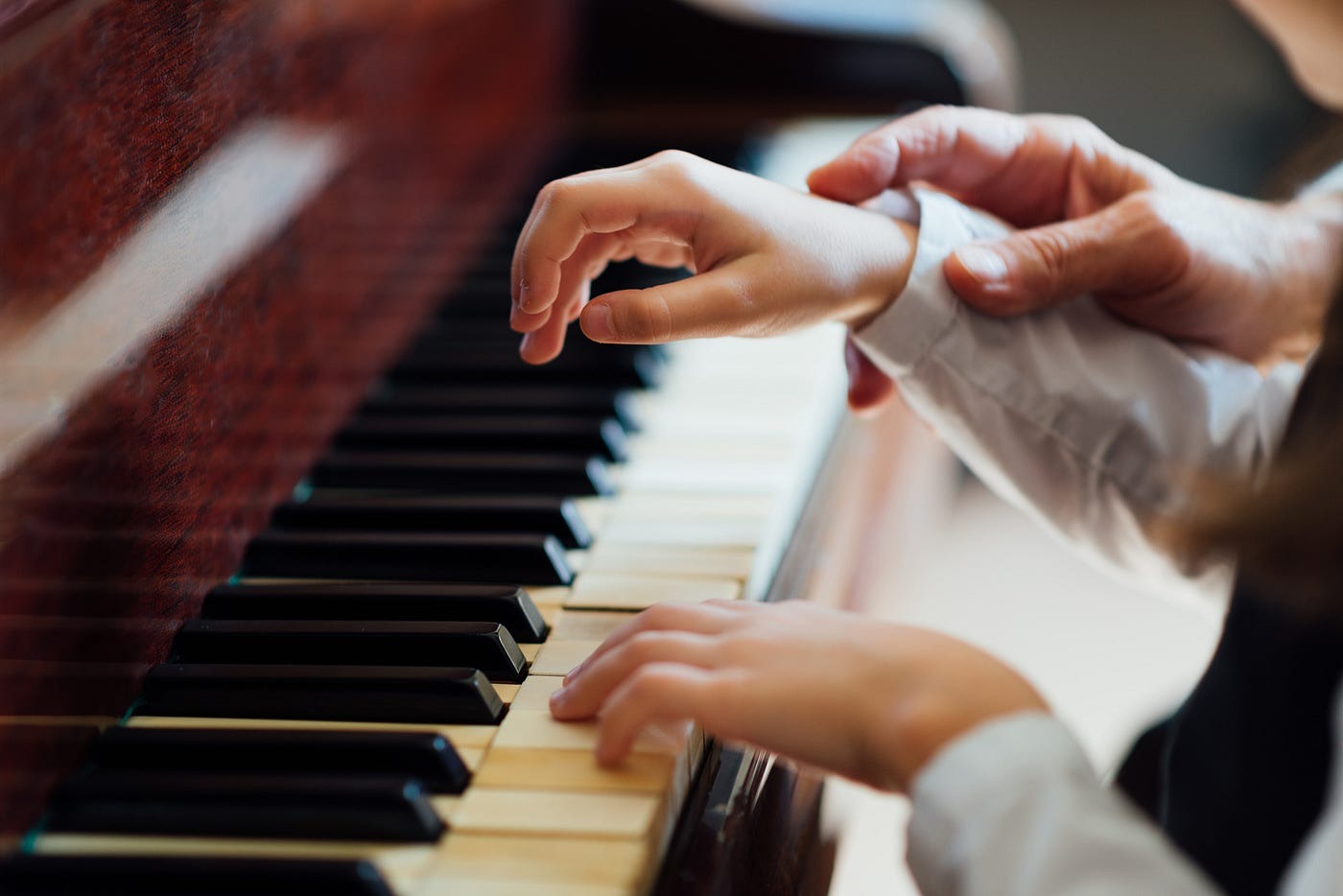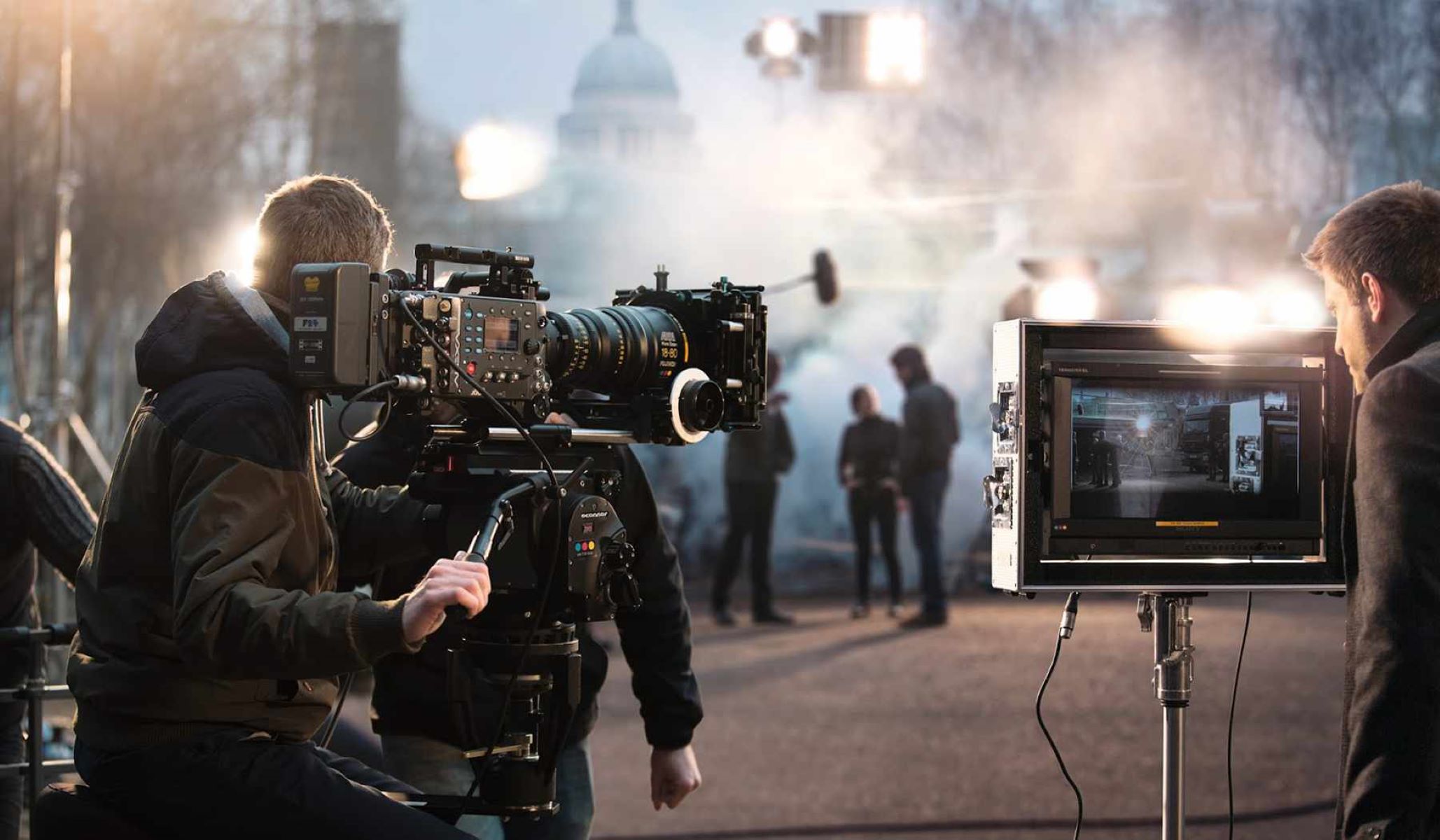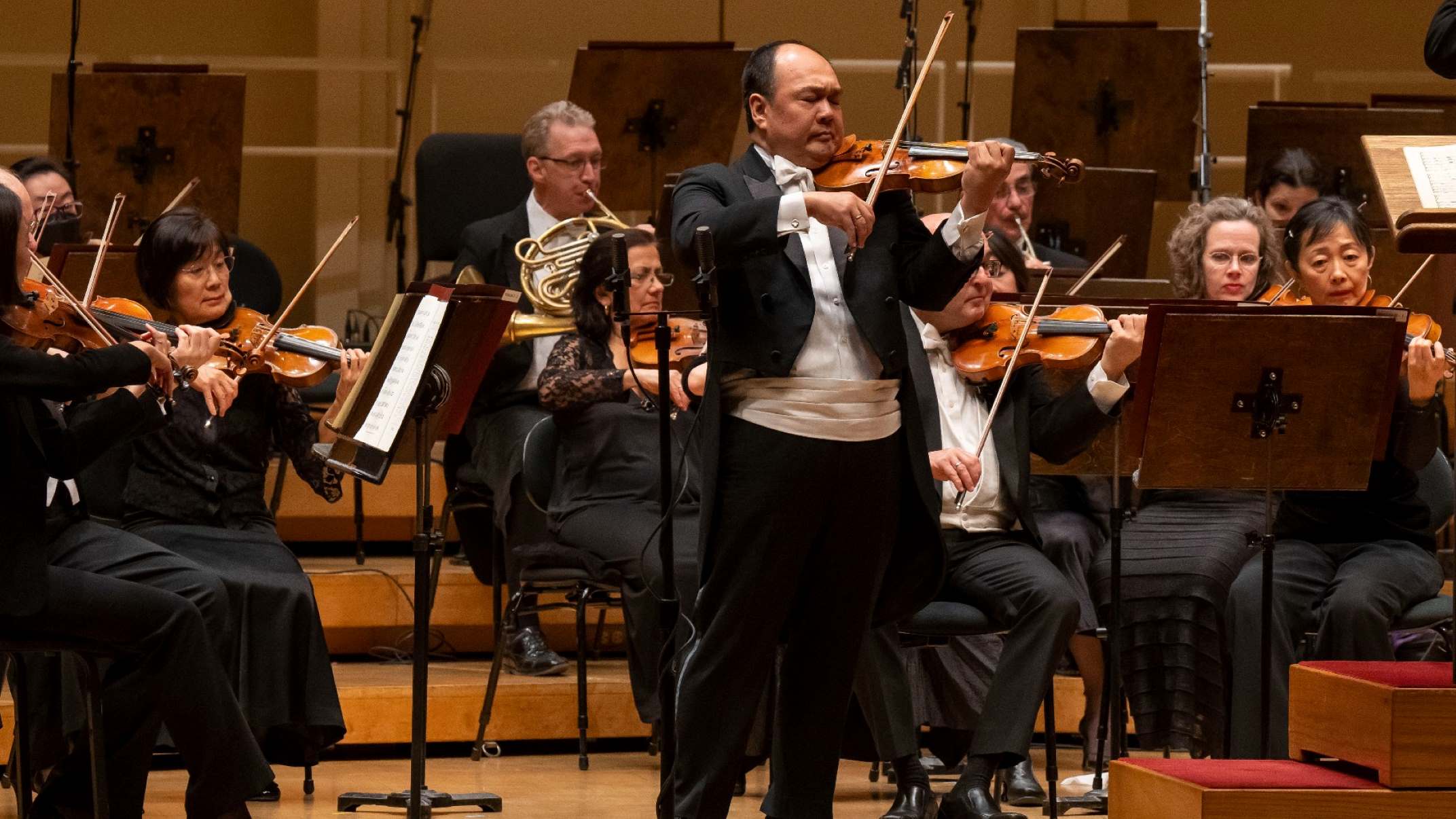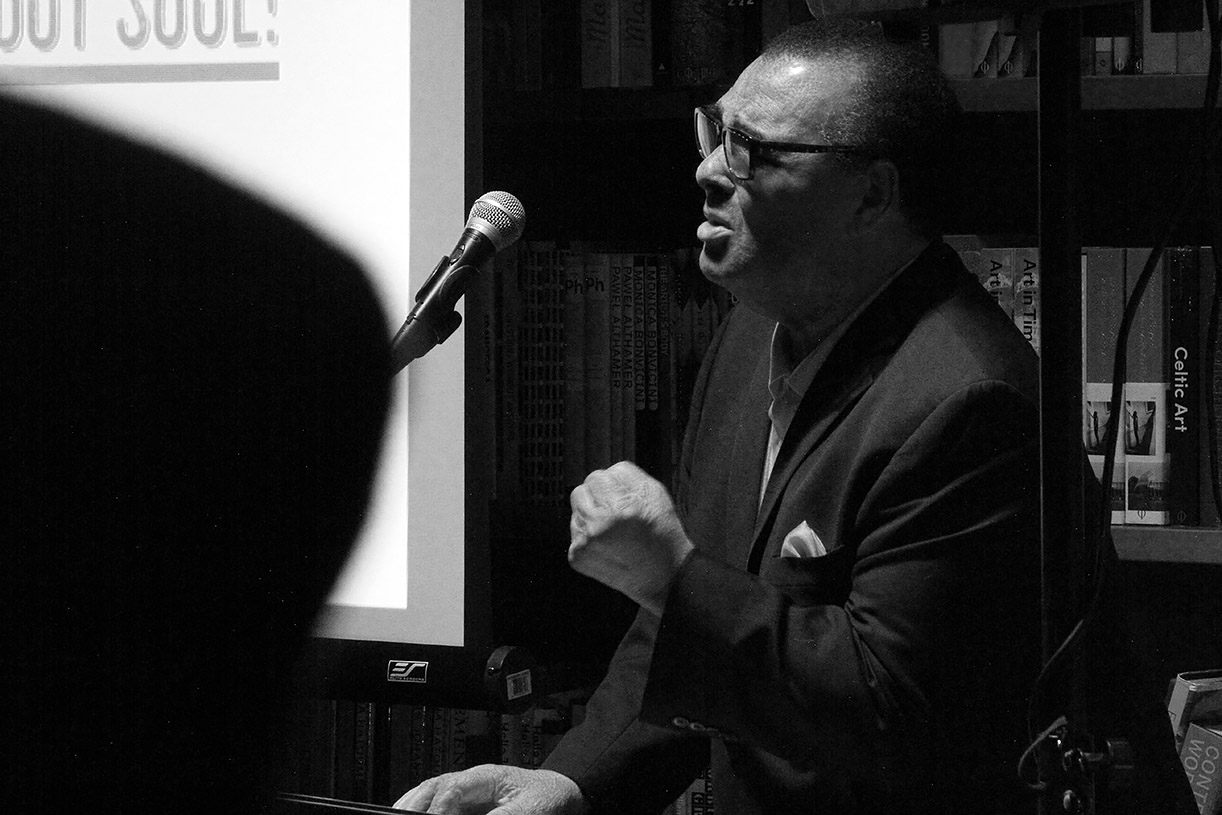Home>Production & Technology>Orchestra>Why Are Movies Sometimes Played With A Live Orchestra


Orchestra
Why Are Movies Sometimes Played With A Live Orchestra
Published: February 24, 2024
Discover the magic of live orchestral performances accompanying movies and the unique experience they bring to the big screen. Learn why orchestras are sometimes used in movie screenings.
(Many of the links in this article redirect to a specific reviewed product. Your purchase of these products through affiliate links helps to generate commission for AudioLover.com, at no extra cost. Learn more)
Table of Contents
Introduction
When it comes to the immersive experience of watching a movie, the orchestral accompaniment can elevate the entire sensory journey. The fusion of live music with visuals on the big screen creates a captivating synergy that resonates with audiences on a profound level. The art of integrating live orchestral performances with film screenings has a rich history, spanning decades and encompassing a diverse array of cinematic genres.
The allure of live orchestral accompaniment lies in its ability to breathe new life into classic and contemporary films alike. By infusing the cinematic narrative with evocative melodies and harmonies, orchestras have the power to amplify the emotional impact of storytelling, heighten suspense, and underscore pivotal moments with breathtaking musical crescendos. This multi-sensory approach to film presentation transcends the conventional boundaries of entertainment, offering audiences an unparalleled fusion of auditory and visual splendor.
As we delve into the realm of movies played with a live orchestra, it becomes evident that this immersive experience is not confined to a specific genre or era. Whether it's a timeless classic from the Golden Age of Hollywood or a modern blockbuster, the marriage of live orchestral music with cinematic storytelling has the potential to transport viewers into a realm of heightened artistic resonance. This convergence of art forms serves as a testament to the enduring appeal of orchestral music and its capacity to enrich the cinematic landscape.
In the following sections, we will embark on a journey through the captivating history of live orchestral accompaniment in film, exploring its profound impact on the movie-going experience and delving into the intricate process of creating a live orchestral accompaniment for a film. Additionally, we will shine a spotlight on notable examples of movies that have been elevated by the enchanting presence of a live orchestra, showcasing the transformative power of this harmonious union. Through this exploration, we aim to unravel the enchanting tapestry of music and film, celebrating the symbiotic relationship between these two art forms.
The stage is set, the orchestra poised, and the silver screen awaits – join us as we unravel the mesmerizing allure of movies played with a live orchestra.
The History of Live Orchestral Accompaniment in Film
The history of live orchestral accompaniment in film traces its origins to the early days of cinema, when silent films reigned supreme. During the silent film era, which spanned from the late 19th century to the early 1930s, the absence of synchronized sound propelled orchestras and live musicians into the spotlight as essential components of the movie-going experience. The live accompaniment served as a dynamic counterpart to the visual narrative, enriching the on-screen action with a symphonic tapestry of emotions and moods.
In the nascent stages of cinema, theaters often employed pianists, organists, or small ensembles to provide live musical accompaniment during screenings. These musicians were tasked with improvising and composing music on the spot, aligning their compositions with the pacing and emotional nuances of the unfolding narrative. This improvisational approach not only showcased the musicians' artistry but also underscored the symbiotic relationship between live music and visual storytelling.
As the silent film era progressed, larger orchestras became commonplace in theaters, further heightening the immersive nature of the cinematic experience. From bustling comedies to gripping dramas, orchestras tailored their performances to suit the thematic essence of each film, infusing the screenings with an extra layer of depth and emotional resonance.
The transition to sound in the late 1920s brought about a paradigm shift in the movie industry, leading to the decline of live orchestral accompaniment in mainstream theaters. However, the legacy of orchestral accompaniment persisted in specialized screenings and revival events, where enthusiasts and connoisseurs sought to preserve the enchanting tradition of live music intertwining with cinematic masterpieces.
In recent decades, a resurgence of live orchestral accompaniment has emerged, rekindling the timeless allure of this art form. Renowned orchestras around the world have embraced the opportunity to breathe new life into classic films, captivating contemporary audiences with the timeless magic of live music. This revival has not only reignited interest in cinematic classics but has also introduced younger generations to the captivating synergy of live orchestral accompaniment and film.
The history of live orchestral accompaniment in film stands as a testament to the enduring marriage of music and cinema, transcending technological advancements and evolving artistic landscapes. This harmonious union continues to enchant audiences, bridging the realms of auditory and visual storytelling with unparalleled grace and emotional resonance.
The Impact of Live Orchestral Accompaniment on the Movie-Going Experience
The presence of a live orchestra during a film screening transcends the traditional movie-going experience, elevating it to a realm of profound artistic immersion. The impact of live orchestral accompaniment extends far beyond the auditory realm, permeating the very essence of the movie-watching journey and leaving an indelible imprint on the hearts and minds of audiences.
Heightened Emotional Resonance
Live orchestral accompaniment serves as an emotive catalyst, amplifying the emotional resonance of the cinematic narrative. The evocative melodies and harmonies woven into the fabric of the film not only complement the visual storytelling but also imbue it with a heightened sense of poignancy and depth. Whether it's the swelling crescendo of a romantic interlude or the thundering percussion underscoring a climactic battle, the orchestral accompaniment infuses each moment with an intensified emotional impact, eliciting a visceral response from viewers.
Multisensory Immersion
The fusion of live orchestral music with visual storytelling creates a multisensory symphony that transcends the confines of the screen. Audiences are enveloped in a tapestry of sound and vision, forging a profound connection with the narrative that extends beyond mere observation. The synchronized interplay between live music and on-screen action engulfs viewers in a sensorial embrace, transporting them into the heart of the cinematic world and forging an immersive bond that lingers long after the credits roll.
Enhanced Artistic Appreciation
Live orchestral accompaniment invites audiences to engage with the film on a deeper level, fostering a heightened appreciation for the artistic nuances embedded within the narrative. The orchestral interpretation of the film's score illuminates the intricate craftsmanship behind the music, allowing viewers to discern the subtle nuances and thematic motifs that underscore the storytelling. This heightened artistic awareness enriches the movie-going experience, empowering audiences to unravel the layers of musical intricacy interwoven with the visual tapestry unfolding before them.
Communal Bonding and Shared Experience
The presence of a live orchestra fosters a sense of communal bonding and shared experience among audiences. The collective immersion in the live orchestral performance creates a unifying thread that binds viewers together, forging a shared emotional journey that transcends individual perspectives. The palpable energy emanating from the orchestra resonates within the theater, creating a collective atmosphere of awe and enchantment that unites diverse audiences in a harmonious celebration of cinematic artistry.
In essence, the impact of live orchestral accompaniment on the movie-going experience extends beyond the realms of entertainment, transcending into the realm of profound artistic communion. As audiences are enveloped in the symphonic embrace of live music and visual storytelling, they embark on a transformative journey that ignites the senses, kindles the emotions, and forges an enduring connection with the cinematic narrative. This immersive convergence of auditory and visual artistry serves as a testament to the enduring allure of live orchestral accompaniment and its capacity to elevate the movie-going experience to unprecedented heights.
The Process of Creating a Live Orchestral Accompaniment for a Film
The process of creating a live orchestral accompaniment for a film is a meticulously orchestrated endeavor that harmonizes the realms of music and cinema with exquisite precision. From the initial stages of conceptualization to the grandeur of the live performance, each step in this intricate process is imbued with artistic ingenuity and technical finesse.
Selection and Analysis of the Film
The journey begins with the careful selection of a film that possesses the thematic depth and emotional resonance to thrive in a live orchestral setting. The chosen film undergoes meticulous analysis, with the musical team dissecting its narrative nuances, character arcs, and pivotal moments to discern the ideal musical motifs and orchestrations that will enrich the cinematic experience.
Composition and Orchestration
Once the thematic essence of the film has been distilled, the process of composition and orchestration ensues. Renowned composers or arrangers collaborate to craft a bespoke musical score that seamlessly intertwines with the visual narrative, heightening its emotional impact and thematic cohesion. From sweeping symphonic arrangements to delicate chamber orchestrations, the musical tapestry is meticulously woven to evoke a symphony of emotions that resonates with the essence of the film.
Rehearsals and Artistic Interpretation
As the musical score takes shape, rehearsals become a crucible of artistic interpretation and collaboration. The conductor and orchestra embark on a transformative journey, delving into the intricacies of the score to infuse it with nuanced dynamics, expressive phrasing, and emotive depth. Each rehearsal serves as a canvas for artistic refinement, as the orchestra breathes life into the musical tapestry, aligning its rhythms and melodies with the ebb and flow of the cinematic narrative.
Synchronization and Technical Mastery
The synchronization of live orchestral music with the film is a feat of technical mastery that demands precision and finesse. Sound engineers and technical experts collaborate to ensure seamless integration, aligning the live performance with the visual cues of the film. The marriage of sound and image is meticulously calibrated, culminating in a symphonic synergy that unfolds with breathtaking precision during the live performance.
Captivating Live Performance
The culmination of this intricate process is a captivating live performance that transcends the boundaries of traditional film screenings. As the orchestra takes the stage, the cinematic world comes alive in a symphony of sight and sound, enveloping audiences in a mesmerizing sensorial embrace. The live orchestral accompaniment unfolds in harmony with the on-screen narrative, eliciting a profound emotional resonance and forging an immersive bond between the auditory and visual realms.
In essence, the process of creating a live orchestral accompaniment for a film is a testament to the seamless fusion of artistic vision, technical expertise, and emotive storytelling. This symphonic union of music and cinema stands as a testament to the enduring allure of live orchestral accompaniment, captivating audiences with its transformative power and enriching the cinematic landscape with its harmonious resonance.
Notable Examples of Movies Played with a Live Orchestra
The enchanting fusion of live orchestral accompaniment with iconic cinematic masterpieces has graced audiences with transcendent sensory experiences, breathing new life into beloved films and captivating viewers with its symphonic allure. From timeless classics to modern epics, the marriage of live orchestral music and film has yielded a treasure trove of unforgettable performances that have resonated with audiences worldwide.
One notable example of a movie played with a live orchestra is the timeless masterpiece "The Godfather." The sweeping saga of the Corleone family, underscored by Nino Rota's evocative score, has been brought to life in grand fashion through live orchestral performances. As audiences are immersed in the world of organized crime and familial strife, the live orchestral accompaniment elevates the emotional stakes, infusing each scene with a palpable sense of operatic grandeur and tragic poignancy. The synergy between the on-screen drama and the symphonic resonance of the orchestra creates an immersive experience that lingers in the hearts of viewers long after the curtains fall.
Another remarkable example is the enchanting fantasy epic "The Lord of the Rings" trilogy, which has been graced with awe-inspiring live orchestral performances. Howard Shore's magnum opus of a musical score, intricately woven with leitmotifs and thematic richness, finds new life as orchestras bring Middle-earth to concert halls around the globe. The grandeur of the live orchestral accompaniment amplifies the epic scope of the narrative, propelling audiences into a realm of mythic wonder and harrowing heroism. From the tranquil beauty of the Shire to the thunderous clashes of Mordor, the live orchestra weaves a sonic tapestry that embarks on a transformative journey alongside the Fellowship and resonates with the hearts of all who bear witness.
In addition, the timeless charm of "Casablanca," a cinematic gem revered for its timeless romance and wartime intrigue, has been graced with enchanting live orchestral performances. As the bittersweet melodies of Max Steiner's score intertwine with the on-screen chemistry of Humphrey Bogart and Ingrid Bergman, the live orchestra elevates the film's emotional resonance to new heights. Each swell of the orchestra's crescendo mirrors the tumultuous passions and moral dilemmas that unfold in the narrative, enveloping audiences in a symphonic embrace that transcends the boundaries of time and space.
These notable examples stand as a testament to the enduring allure of movies played with a live orchestra, showcasing the transformative power of live orchestral accompaniment in enriching the cinematic landscape and forging indelible connections with audiences. As these cherished films are brought to life through the symphonic resonance of live orchestras, they continue to captivate and inspire, transcending the confines of the silver screen to etch their melodies into the annals of cinematic history.
Conclusion
The mesmerizing allure of movies played with a live orchestra transcends the boundaries of traditional cinematic experiences, weaving a symphonic tapestry that resonates with audiences on a profound emotional level. The rich history of live orchestral accompaniment in film, stemming from the silent era to its modern resurgence, underscores the enduring marriage of music and cinema, showcasing the timeless appeal of this harmonious union.
Live orchestral accompaniment has left an indelible imprint on the movie-going experience, elevating it to unprecedented heights of artistic immersion. Through the heightened emotional resonance, multisensory immersion, enhanced artistic appreciation, and communal bonding it fosters, live orchestral accompaniment has redefined the boundaries of cinematic enchantment, inviting audiences to embark on transformative journeys that ignite the senses and kindle the emotions.
The intricate process of creating a live orchestral accompaniment for a film embodies a symphony of artistic vision, technical finesse, and emotive storytelling. From the meticulous selection and analysis of the film to the captivating live performance, each stage of this process unfolds with a seamless fusion of creativity and precision, culminating in an immersive symphonic union that captivates audiences with its transformative power.
Notable examples of movies played with a live orchestra, such as "The Godfather," "The Lord of the Rings" trilogy, and "Casablanca," stand as testaments to the enduring impact of live orchestral accompaniment on cinematic masterpieces. These captivating performances have graced audiences with transcendent sensory experiences, breathing new life into beloved films and forging indelible connections that transcend the confines of time and space.
In essence, the convergence of live orchestral music and visual storytelling stands as a testament to the enduring allure of the cinematic arts. As audiences are enveloped in the symphonic embrace of live orchestral accompaniment, they embark on a transformative journey that transcends mere entertainment, forging an enduring connection with the narrative that lingers in the hearts and minds of all who bear witness.
The enchanting allure of movies played with a live orchestra serves as a testament to the enduring power of artistic collaboration, inviting audiences to partake in a symphonic odyssey that transcends the boundaries of traditional film screenings. As the legacy of live orchestral accompaniment continues to unfold, it enriches the cinematic landscape with its harmonious resonance, captivating and inspiring audiences with its transformative power, and etching its melodies into the annals of cinematic history.











